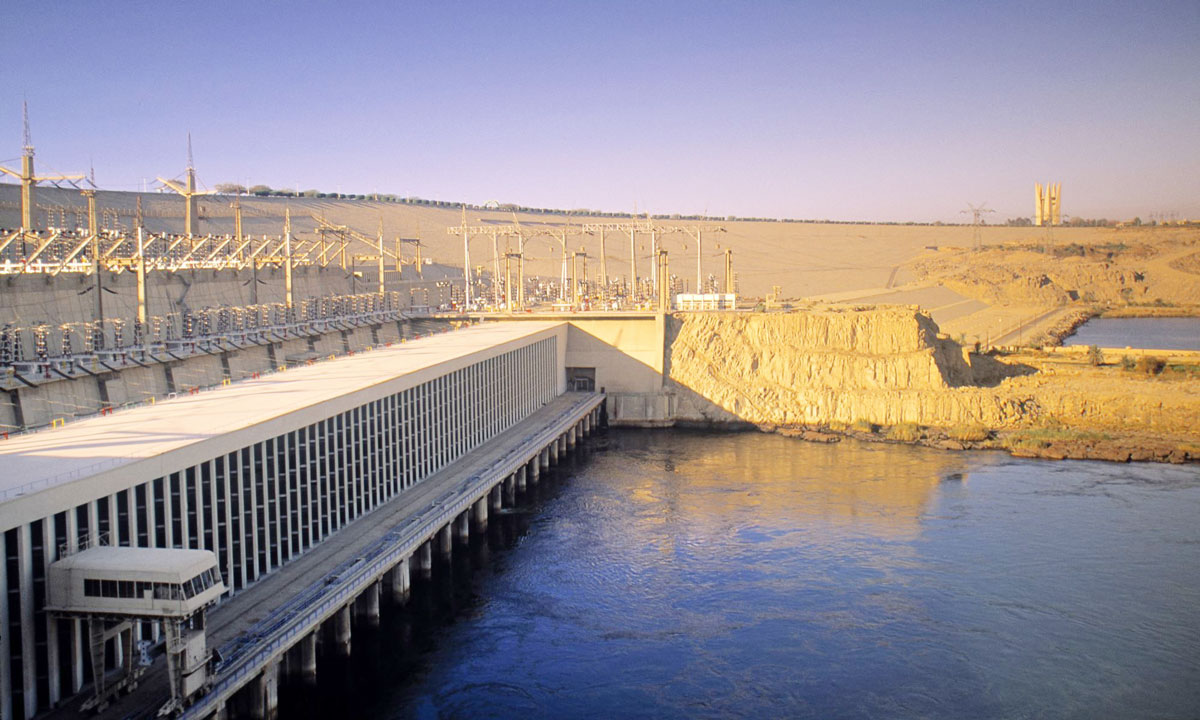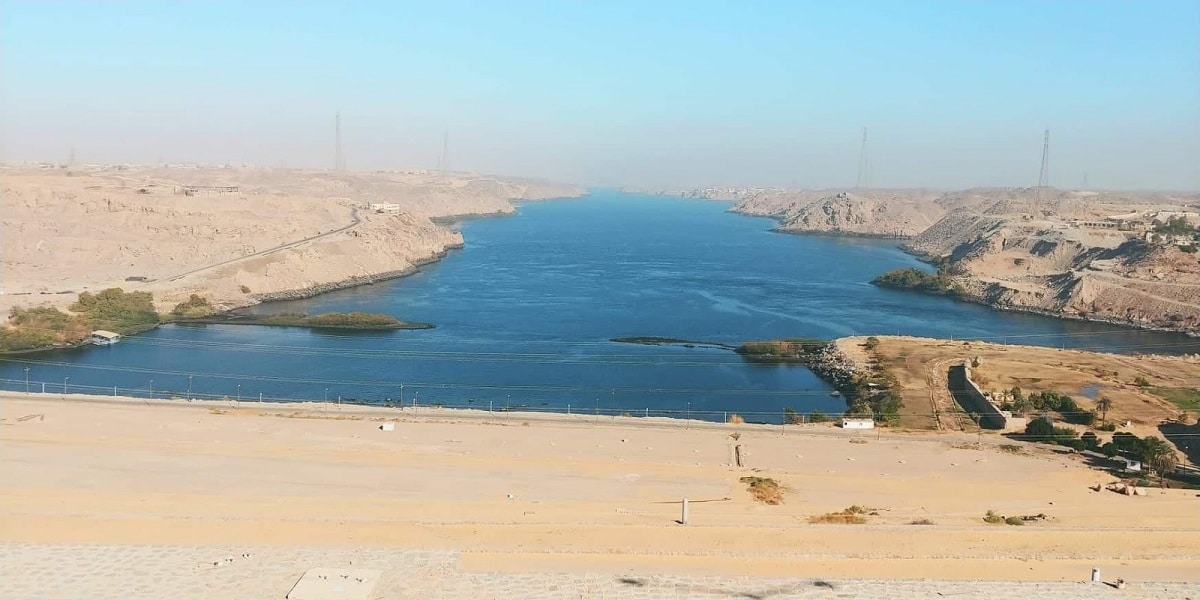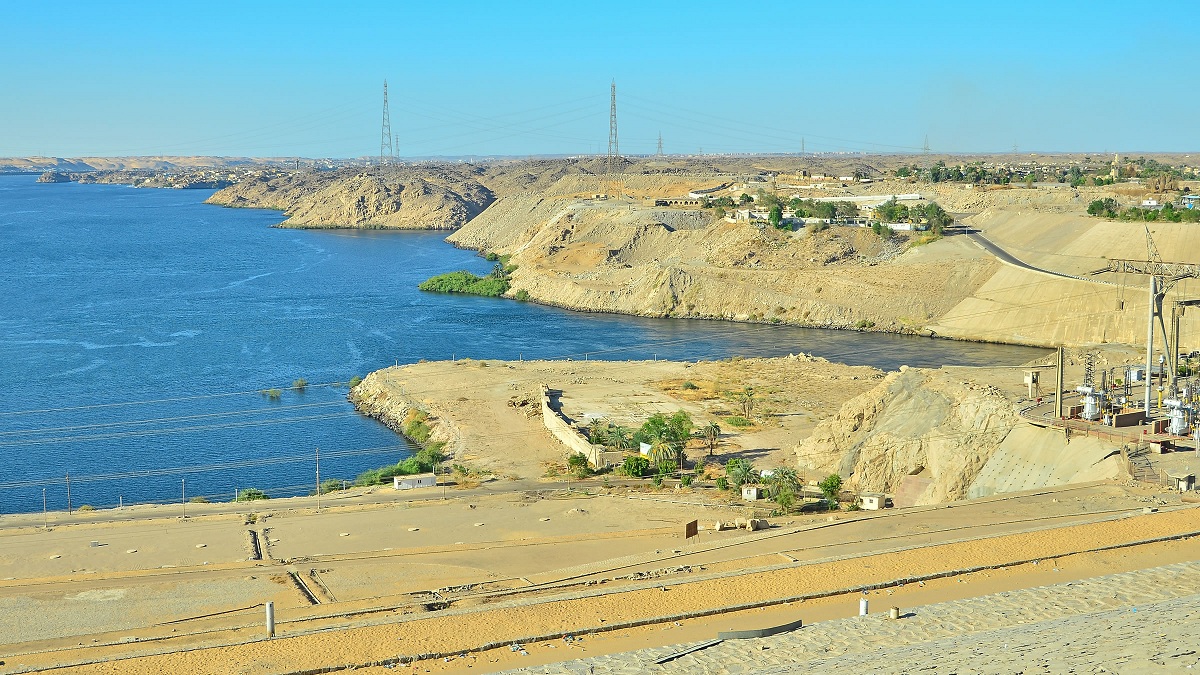
Today we are going to talk about one of the most important engineering constructions that have taken place in the XNUMXth century. It's about the Aswan dam. Its construction began in 1960 and ended in 1970. It took 10 years of construction necessary to alleviate the annual floods and occasional droughts that Egypt experienced. Today, the Aswan Dam has become a source of electricity supply by which Egypt can develop.
In this article we are going to tell you about all the characteristics and the origin of the Aswan Dam.
Key features

When we talk about the Aswan High Dam we are referring to the Aswan High Dam. That is, there are two dams called high and low. The downside is much smaller in size and earlier have the time. Seeing that the slope was not of sufficient size to be able to alleviate the problems of floods and seasonal droughts, the great Aswan dam was built. And it is that the Aswan dam measures 3.600 meters in length and up to 111 meters in height. It is one of the most impressive constructions made by human beings. The base is 980 meters wide and gradually decreases to 40 meters at the top.
Its construction took 43 million cubic meters of stone and 10 years to finish it. The construction of this prison gave rise to the beginning of Lake Nasser. This lake is about 500 kilometers long and up to 16 kilometers wide. It occupies a total of 6.000 square kilometers of water, which makes it the largest man-made lake in the world. These constructions were necessary since he mentioned he was going through some problems of droughts and floods. The floods could not be stopped as there was no infrastructure that could store water. The same happened with the negative impacts of a drought. Since rainfall was lower in some seasons of the year, water could not be stored for supply and irrigation.
Dimensions and low dam

The flooded area that has formed Lake Nasser made it necessary to move more than 90.000 people and up to 24 monuments. The most important monuments displaced by the formation of the Aswan Dam have been the temples of Abu Simbel and Philae. The dam has 12 generators of 175 megawatts of power and each one has a hydroelectric production of 10.000 GWh / year. Originally, since electricity demand was not so high, it was capable of supplying half of all the demand in Egypt.
On the other hand, as we have mentioned before, there are several Aswan Dam. The low Aswan Dam was built by the British in the late 54th century and is XNUMX meters high. Although it was enlarged twice during the XNUMXth century, it was about to overflow in 1946. This is due to the large amount of heavy rains causing flooding that this dam could not deal with. It was then at that moment when the idea of building a new dam with a greater volume to be able to alleviate these flood problems began to be considered.
Many tourists want to visit the Aswan Dam and their visit consists of traveling the road at the top. Once the entire upper part has been covered, the vehicle must be stopped in a parking lot in the middle of the half construction. From there you can see on both sides the unevenness of the water and the immensity of the dam. There is no type of possibility of being able to visit the interior or the turbine room where the hydroelectric energy is generated. Until today this dam has not become a piece of tourism.
Although this visit cannot be classified as essential, since it is only a stop of a few minutes it is usually interesting for many excursions. If it is the case in which you go on an excursion to the Temple of Philae and the Unfinished Obelisk, it is interesting to take this dam to see it.
Origin of the Aswan Dam

No type of press has had as much history as this one. When its construction was completed in 1970, it entered the top ten of many of the world's dam and container rankings. They are currently in the top 8 in terms of area and in the top 4 by reservoir capacity. What most impacted the world after its construction was the work that was carried out with the help of many countries to be able to save the wonderful Egyptian temples that were on the banks of the Nile. And it is that these many temples and they will be submerged under water from the future reservoir. For this, 52 countries collaborated in the work of moving the temples ignored a large amount of money.
This story happened in the middle of the cold war in which there were power struggles and wars for territory. The construction of the Aswan Dam it became a forced exodus for thousands of people who had to move. It also became a war against the clock in order to save unique monuments that are more than 4.000 years old.
Keep in mind that Egypt is 98% desert and only the banks of the Nile are inhabited and are fertile land. This means that a dam can ensure the water supply throughout the year and avoid havoc with unexpected flooding of rivers. It is a work that changed the life of Egypt. Besides water, it would allow electricity to reach more than 20.000 localities that did not yet have it. As we have mentioned before, there was already a British dam in Aswan but it was only 30 meters high and could not store enough water. It was routinely overwhelmed by the rising Nile River and could only store water for a year.
With a being at the head of the new government, the star project began and attempts to get funding and help began. After obtaining financing for the pharaonic construction, the works began. This dam has various functions: it seeks to protect the population from the historic floods of the Nile River, it serves to store water for irrigation and consumption and to produce hydroelectric energy.
I hope that with this information you can learn more about the Aswan Dam and its origins.